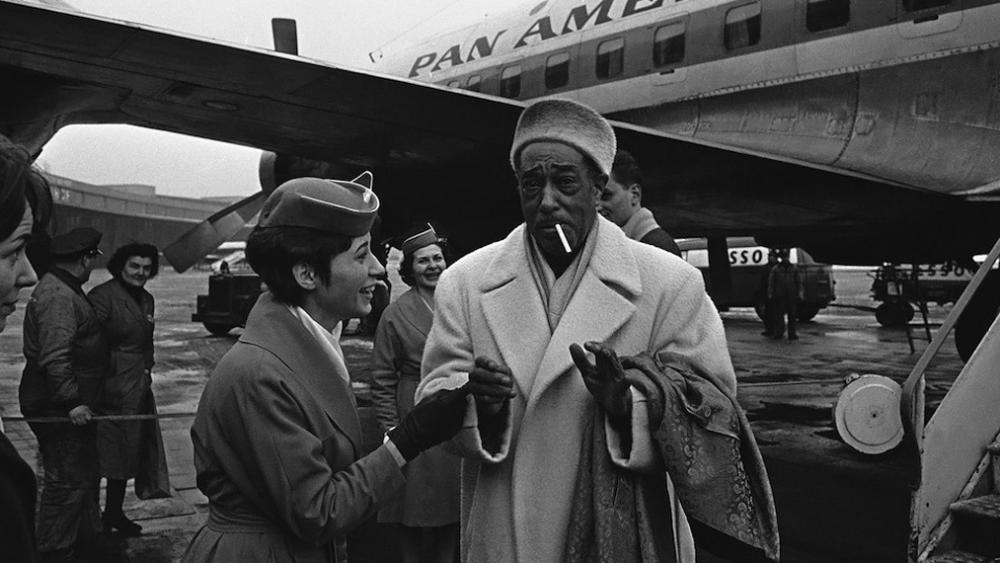You know how some older “legacy” artists program their concerts like a greatest-hits collection? Duke Ellington did some of that as he was getting older — people wanted to hear the Maestro lead “Satin Doll” and “Mood Indigo,” after all — but he never stopped writing new music, either. And his late works didn’t stop pushing his own boundaries.
The newly unearthed recording here is an early draft of a piece called “Afrique.” Unlike much of Ellington’s famous repertoire, it’s not built around a beautiful melody. It hardly goes through any melodic development, or even any chord changes, really. It’s driven by an incessant floor-tom pulse, with fragments from the horns and occasionally an organ or piano interjection. There’s eventually a restless tenor-sax solo, stabbing a legato statement into the dark here and there. And over all this, there’s a wordless female vocal somewhere between opera and primal scream. It’s a tone poem, basically — you could picture it as a film soundtrack. It’s cool in that it’s so different for the Duke. It’s also cool in that it’s kind of weird.
It’s unclear exactly why this recording was made. We do know that the Ellington Orchestra was on tour in Europe in 1970, when it stopped in at a studio in Cologne, Germany. (The recording engineer, Conny Plank, would soon famously work with Kraftwerk, Brian Eno, Neu! and various other experimental and electronic rock bands.) We also know that “Afrique” was part of a suite called The Afro-Eurasian Eclipse, which was recorded the following year and released as an album posthumously. That suite was inspired by the idea of what we’d now call globalization — a concept with which Ellington had grown familiar through several world tours. So it makes sense that he’d call a tune of his “Afrique,” and that it would be driven by percussion meant to evoke something ominous and primal, or at least exotically “African.”
The version eventually committed to the album is more focused: The horn themes are more coherent, the sax solo is supplanted by a drum solo, the organ and female voice disappear. (Scholars still haven’t confirmed who that voice belongs to, though they have a few different guesses.) That makes this version more fascinating: It’s a snapshot of Ellington working through a new tune, throwing ideas at the wall to see if they stick. And it’s further proof that, even in his 70s, Ellington was ever on the lookout for new sounds.
9(MDA3MTA1NDEyMDEyOTkyNTU3NzQ2ZGYwZg004))



